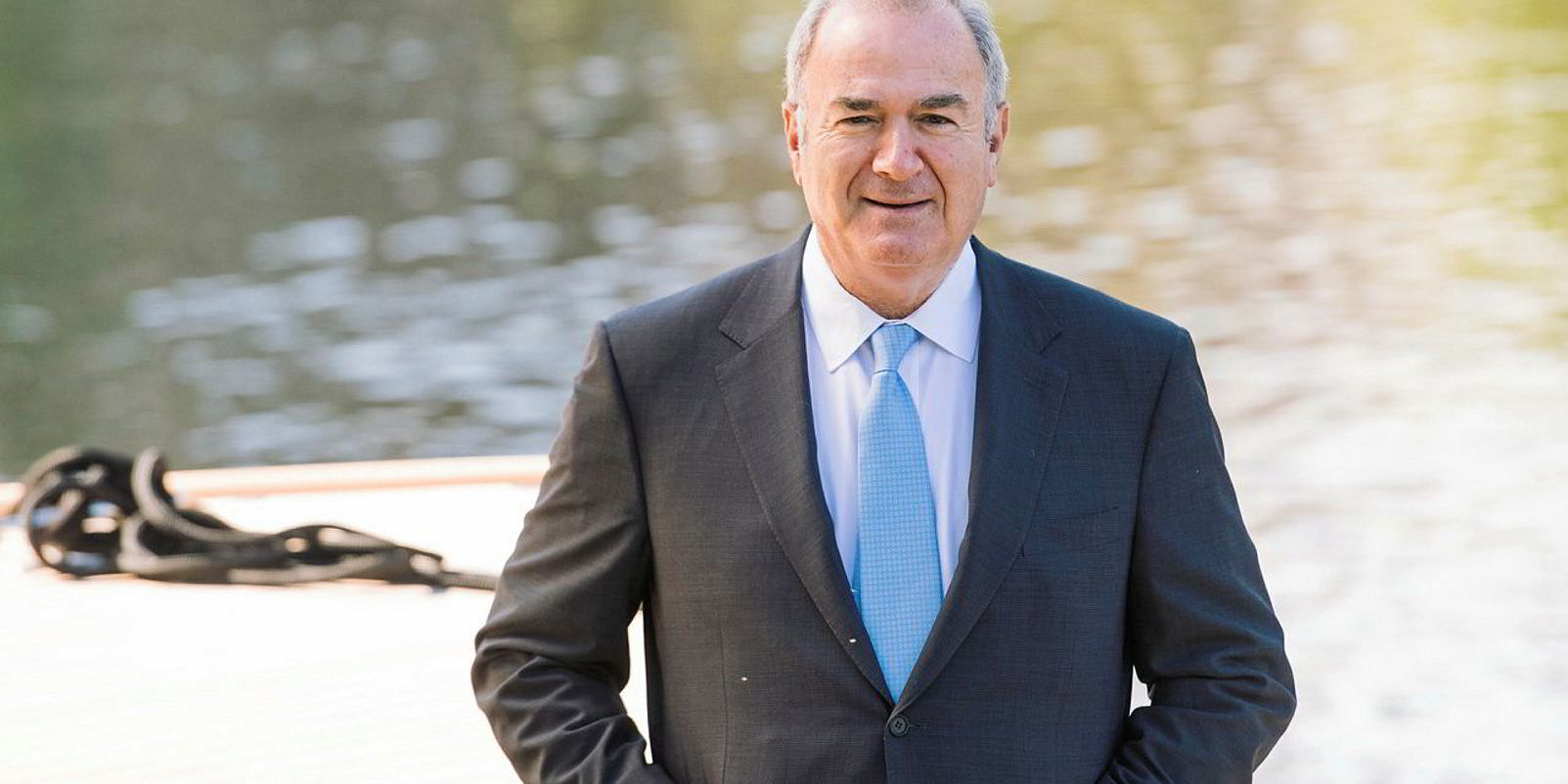Stephen Martin took over as chief executive of Steamship Mutual from Gary Rynsard in February, but he has no plans for a major change in direction.
The London-based club has continued to stick to its main line of business as a protection and indemnity insurer, rather than follow the trend toward diversification that is becoming increasingly popular among its main competitors.
While diversification has been viewed as a method of increasing revenue and hedging business risk, Martin says that having a more monoline approach has proved equally, if not more, successful.
Free reserves
He can point to $467m held by the club in free reserves and a Solvency II capital ratio of 219%, one of the strongest capital ratios in the International Group of Protection & Indemnity Clubs, to validate the strategy.
Martin says one of the reasons for the club's strong financial position is that it has resisted the temptation to use the funds on expanding its business lines.
“Diversification is using members' capital for risks that are not really marine liability based. Our view, and that of the board, about how capital should be used is a little clearer.
"Broadly speaking we are here to write marine-related risks but we don’t use the club’s capital for other resources. We don’t see any need to diversify and there is no appetite for it,” Martin says.
Our view, and that of the board, about how capital should be used is a little clearer. Broadly speaking we are here to write marine-related risks but we don’t use the club’s capital for other resources. We don’t see any need to diversify and there is no appetite for it
Stephen Martin
Where Steamship Mutual has diversified, it has been into areas where its members require additional marine-related insurance services, such as the fixed premium, charterers and war risk, and most recently, cyber risk business lines.
Tonnage growth
Also, strong free reserves allow the Steamship Mutual to take on more risk and decrease its reinsurance costs.
Rather than diversification Steamship Mutual has been seeking tonnage growth by expanding its international networks. Most recently it has set up shop in both Athens and Tokyo. Both are mature shipping markets with established insurance suppliers.
But Martin points out that both regions have a high number of quality shipowners that he believes suit the Steamship Mutual profile.
“Our members are happy for us to decrease risks by bringing in members from all over the world, and Greece and Japan are where there are real quality owners and we would not want to ignore either country,” he says.
The local offices allow Steamship Mutual to meet prospective members face to face and get to know them.
But what would attract shipowners to Steamship Mutual rather than other clubs? Martin points to the high quality of its service, but that is something that all the P&I clubs would claim to have.

That brings him back to the club’s finances again. “We play to our strengths. We have a solid financial position and that is worth emphasising. We have had no general increases and a record of capital redistribution to members, there are lots of positives,” he says.
Discounting is not really an option for the club, he adds, despite the prompting of brokers.
“Brokers are keen on price competition but if you think of it we are members of the International Group and bound by the International Group Agreement and we can’t just walk in and undercut clubs and we would not want to do that,” Martin says.
Track record
Steamship Mutual has a good track record of returning capital to members. It most recently paid back members $22m despite seeing its free reserves fall from $516m in 2018 to $467m in 2019 and reporting an underwriting loss with a combined ratio of 116%.
When combined ratios are over 100% you need to put them right and that is our approach. We will look at our own figures and at the realistic options available to us rather than look at what other clubs are doing
Stephen Martin
But the club’s critics have accused it of breaking the principle of mutuality by returning cash to members only if they renew in the following policy year. Some brokers have suggested under the principle of mutuality money should be returned to all members that paid premiums into the club.
Renewal policy
Martin rejects the criticism, saying that nearly 100% of members renew anyway. Explaining the policy, Martin says: “It means that members who are dedicated to the club and are prepared to demonstrate that by staying are then able to be the beneficiaries of capital redistribution that has accumulated over many years.”
He adds that returning capital to members each year is not always a given. “We will only redistribute capital if we can remain satisfied that the club will remain financially strong,” he says.
Despite the healthy financial reserves, Steamship Mutual reported an underwriting loss last year. This suggests an increase in premiums is due. Martin agrees the market forces are pointing towards a general increase although the club, and its board, are yet to make a decision on it.
“When combined ratios are over 100% you need to put them right and that is our approach,” Martin says. “We will look at our own figures and at the realistic options available to us rather than look at what other clubs are doing.”






